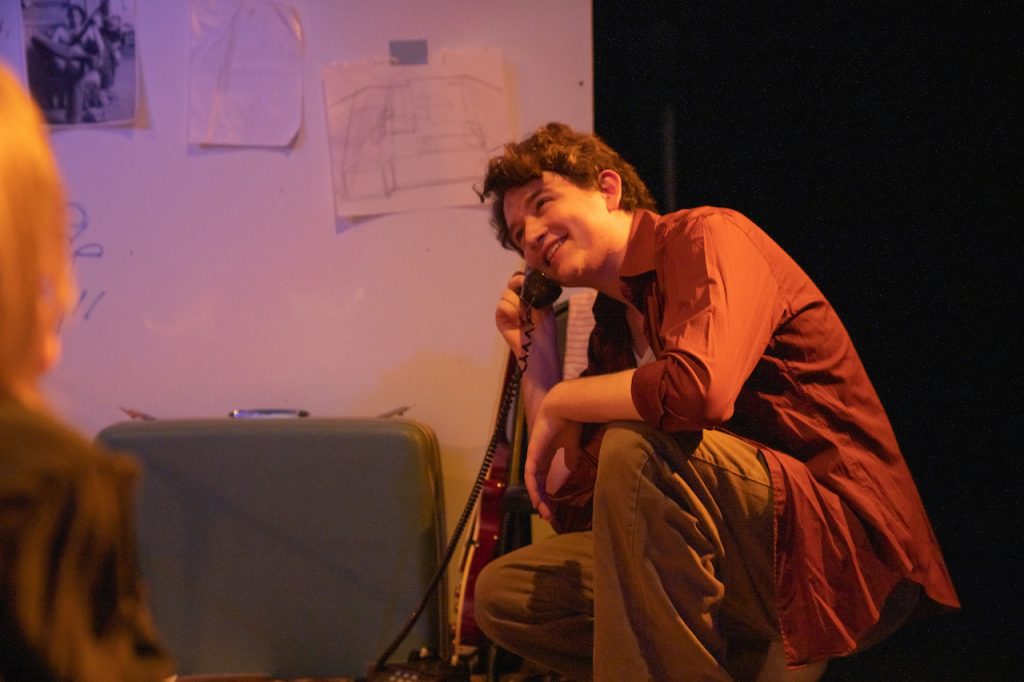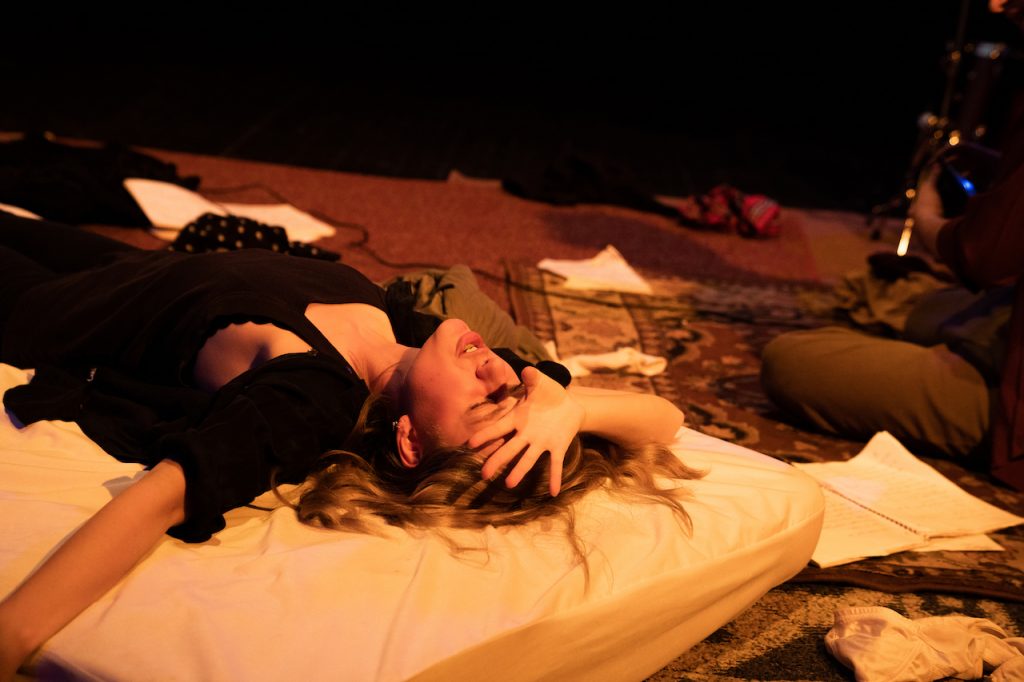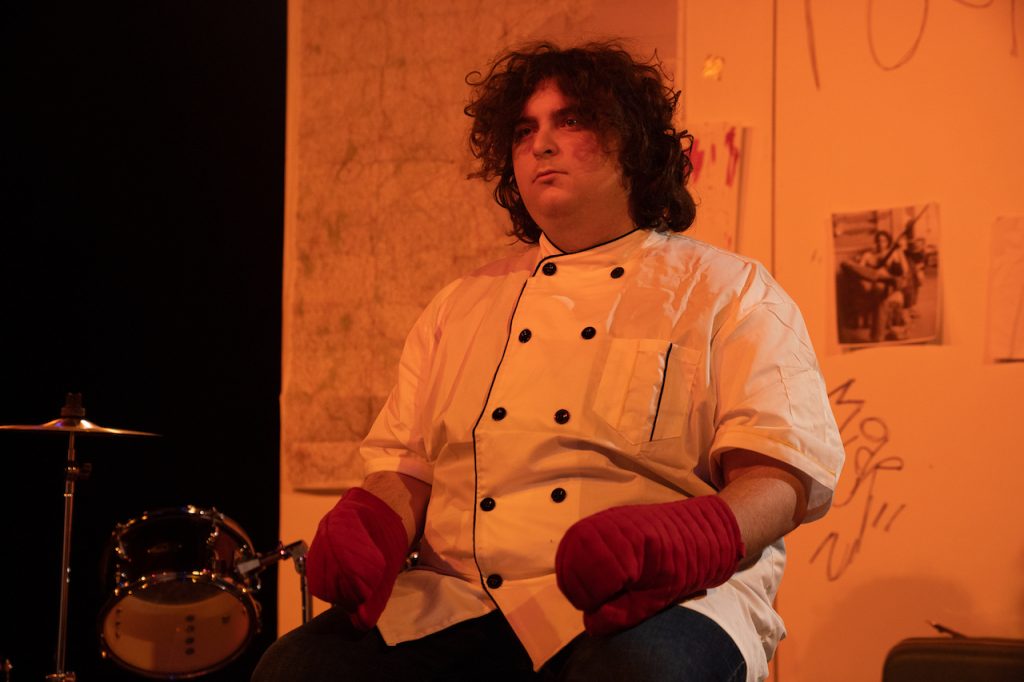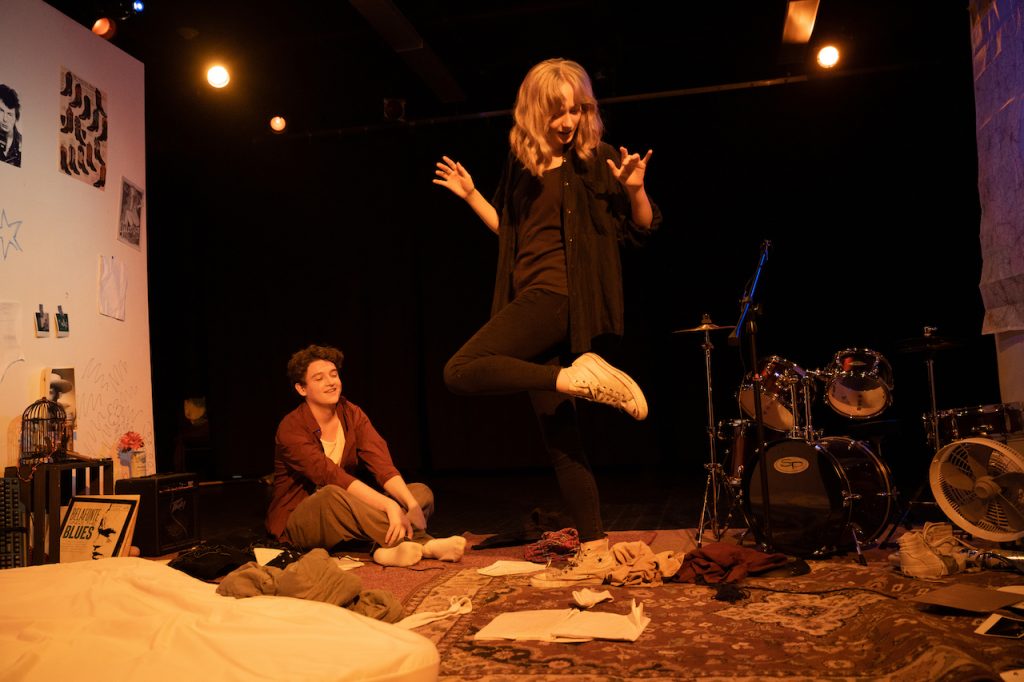By Max McGuire ’24

This past Sunday and Monday, November 13th and 14th, senior Will Davis-Kay ‘23 made his directorial debut with Sam Shepard’s absurdist piece Cowboy Mouth. The play featured Ida Mihok ‘24 as Cavale, Lucas Falick ‘25 as Slim, and Noah Katz ‘24 as The Lobster Man, with Issac DeMarchi ‘23, Maddie Evans ‘24, and Finn Lyon ‘23 on the design team.
Despite the run time of the play being roughly fifty minutes long, Sam Shepard packed years worth of heartbreak into Cowboy Mouth. Sam Shepard’s plays are known for not straying away from the intense darkness inside all of us, but rather highlighting it as satire; we see this in his Family Trio plays, A Lie of the Mind, Fool for Love, and the list goes on. While Cowboy Mouth certainly holds that same Sam Shepard style, the absurdism of the piece plus the small cast makes it feel more intimate- and that intimacy in turn makes the play more disturbingly tragic.
It comes at no surprise that this play does in fact hold a deeper connection to Sam Shepard, but also to Patti Smith, who not only helped co-write the play, but also performed as Cavale at the American Place Theatre on April 29, 1971. The story of the play follows Slim and Cavale as they do absolutely nothing around their tiny apartment room. Cavale feels trapped, Slim has been kidnapped, and The Lobster Man is but an invention to keep the two preoccupied with the fact that there is nothing to do. The story belongs to Slim and Cavale, but it also belongs to Sam Shepard and Patti Smith respectively. The play serves as the culmination of the actual affair between Shepard and Smith, which was happening at the same time Sam Shepard was married to actress and composer O-Lan Jones. This is reflected in Slim’s internal torment between his wife and kid, and Cavale.

It’s important to consider the romantic history revolving around Cowboy Mouth and its playwrights, as it helps audience members understand the character motivations during the play. It is implied that Cavale kidnapped Slim at gunpoint in order to make him a rock and roll star, but at any moment he is free to go. What Slim is really escaping from is his own inability to choose- he loves his captor, and he loves the dream of fame she promises him, but he knows that Cavale can’t really make anything happen. Meanwhile, Cavale is desperately holding on to a dream that was never hers- it is implied that Cavale has endured serious mental trauma, including electroshock therapy. In the end, it is the Lobster Man who fulfills Cavale’s dream, and Slim is finally free, knowing that there is no love behind the false promise that Cavale made to him.

Will Davis-Kay was able to capture this intimate tragedy in the action happening within the small perimeters of Studio A. Two plywood walls were put up parallel to each other, serving as the apartment, with the audience surrounding on perpendicular sides. In this small space, the actors screamed, banged on drums, sang, threw things at each other, attacked each other like animals, danced, and embodied the darkness their characters represent. Being in such a small space allowed for the audience to feel like Slim and Cavale- nothing is keeping us from escaping the chaos playing out in front of us, but we’re so close to it that we’re practically in it. The audience serves as the silent watchers of Slim’s realization that he’s wasted his time, and of Cavale’s further descent into insanity. In the character descriptions in the script, Cavale and Slim are described as animals, as a crow and a coyote, which they refer to themselves as throughout the show. Even the Lobster Man is an animal; this could be representative of the erratic, animalistic behavior that the characters display during the show, or it could be representative of the animal inside of all of us. At one point or another, we’ve all been Slim, we’ve all been Cavale, and we’ve all been the Lobster Man (if not to such an extreme extent).

The most captivating part of this performance, however, are the words. At face value, one could read the script and have no idea what is going on, buried under all the swears and fighting. Absurdism is calculated nonsense- nothing particularly interesting is happening during the events of the play, but rather Slim and Cavale are trying to hold onto something that simply isn’t there. Their love, their idea of stardom, and their dreams are no longer there- all that is left for them to do is anything and everything to pass the time. However, it takes listening to what the characters say, how they say it, and the way in which Ida, Lucas, and Noah choose to deliver the message and add to the emotions behind the characters. Cavale is a storyteller, but she lacks confidence- she could be a star if only she saw herself as the image of the rock and roll prophet she projects onto everyone else around her. Perhaps this is the way Sam Shepard saw Patti Smith, but regardless, at one point Cavale tells Slim the story of how she was the Ugly Duckling in a school play. However, whereas Cavale wanted to finally turn into a swan, they had another girl play the Swan instead. “I never got to be the swan”, Cavale says- which sums up the message of this play perfectly. Using the same animal imagery, Slim and Cavale, despite their attempts, will never be famous- they will never be the swan because their ugliness is much more than face-value; it’s deep rooted in their hearts. Only the Lobster Man, a creature who physically sheds his shell, can become the hero of our story.

Cowboy Mouth is a self-reflection piece, for both Sam Shepard and Patti Smith, but also for all of us. If there’s one thing that Sam Shepard can capture in his plays is that life doesn’t exist without the dark, the insane, and the ugly. I believe Will Davis-Kay captured this sentiment perfectly, in a pseudo-Shepardan way. A congratulations is in order for Will for his directorial debut- if any future pieces he directs are as exceptional as Cowboy Mouth, he is sure to have a successful career in theater beyond Skidmore College.
Thank you to the crew of Cowboy Mouth for their hard work and dedication: Issac DeMarchi ‘23 (set design), Maddie Evans ‘24 (lighting design), Finn Lyon ‘23 (costume design), Naomi Wagner ’26 and Katie Steele ’26 (stage managers), and Tate Brencher ’23 (intimacy coordination).
